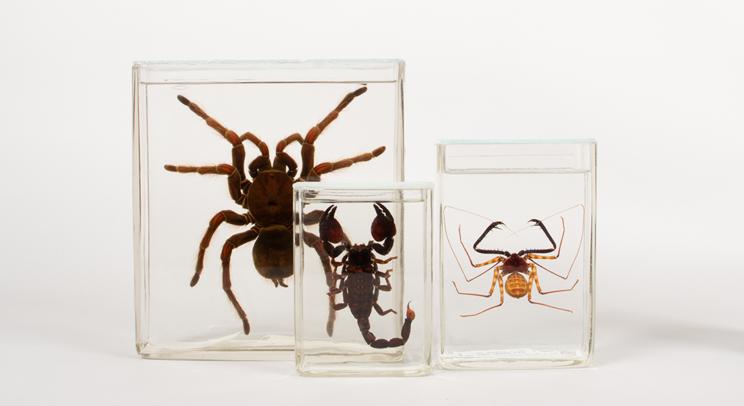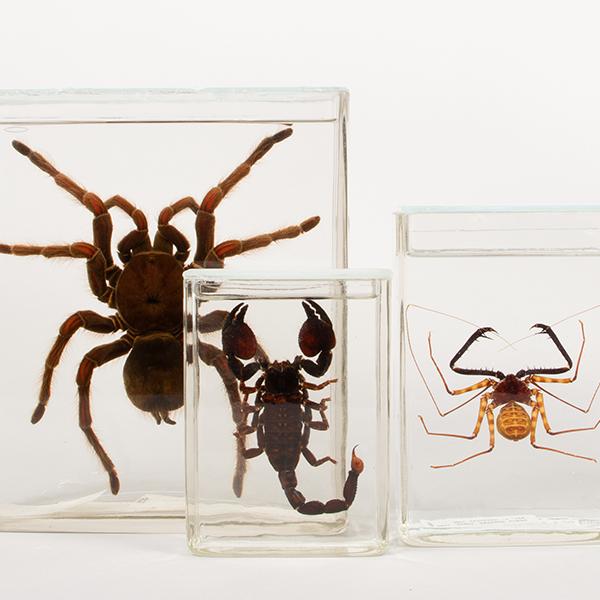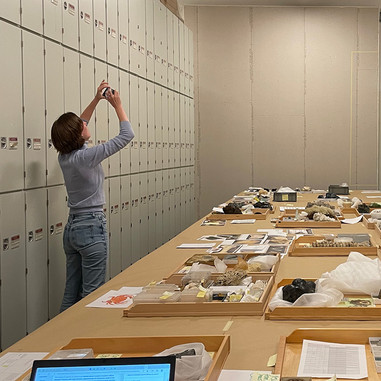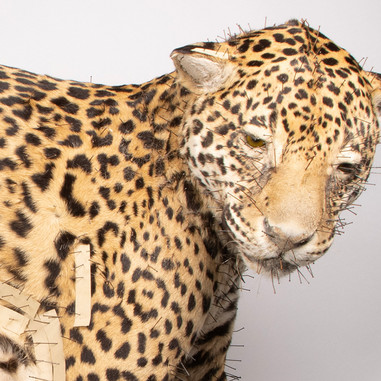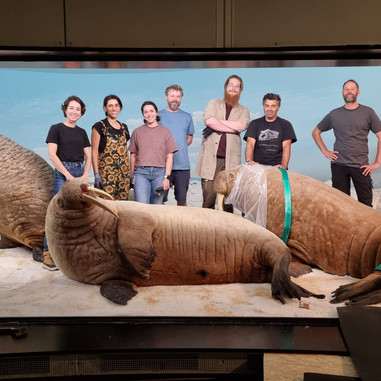By Mikkel Ege Bartholdy
Many of the specimens going into the new galleries are readily mounted and only in need of a condition assessment and a thorough cleaning, before going into storage in preparation for upcoming installation. However, there are some specimens that require more involved conservation treatment before they can be enjoyed by visitors. These specimens are often unstable, damaged, or just very dirty. In some cases, these specimens have been left for quite some time in storage. In other instances, unforeseen circumstances have led to unstable specimens.
Three such fluid specimens – an emperor scorpion (Pandinus imperator), a goliath birdeater (Theraphosa blondi), and a whip spider (Euphrynichus bacilifer) fell victims to unforeseen circumstances! While initially planned for a very short exhibition period, these arachnids stored in an ethanol solution were mounted on Perspex® backplates!
Perspex®, or plexiglass, is an acrylic thermoplastic and not normally used in conjunction with ethanol-based fluid specimens (while it is more common with formalin-solution fluid specimens). Indeed, the solvent’s effect on the polymer chains has for all these specimens resulted in warping and swelling of the material, change that luckily has not affected the specimens. In two of the cases, the emperor scorpion, and the goliath birdeater, the warping of the backplate had pushed against the lid, resulting in a broken seal and accelerated evaporation of the storage fluid.
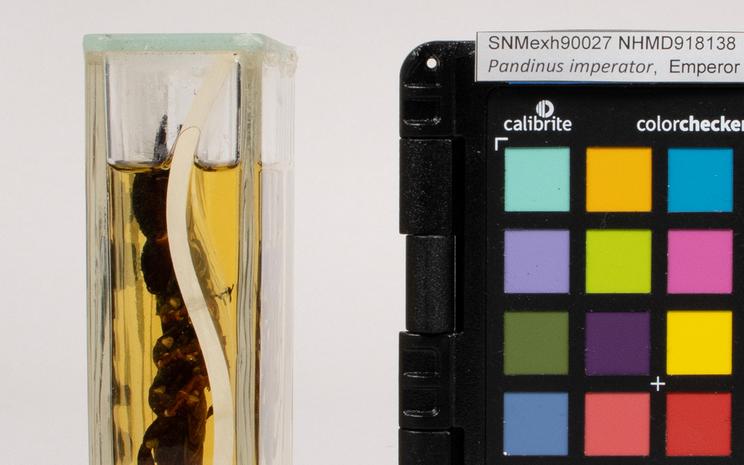
For the third specimen, the whip spider, no alcohol evaporation or changes to the storage fluid occurred. However, as the spider was mounted unto the distorted backplate, there was concern about damage to the specimen. Specifically, the string tied around the pedicel could, with the engorged backplate, have been a cause of harm.
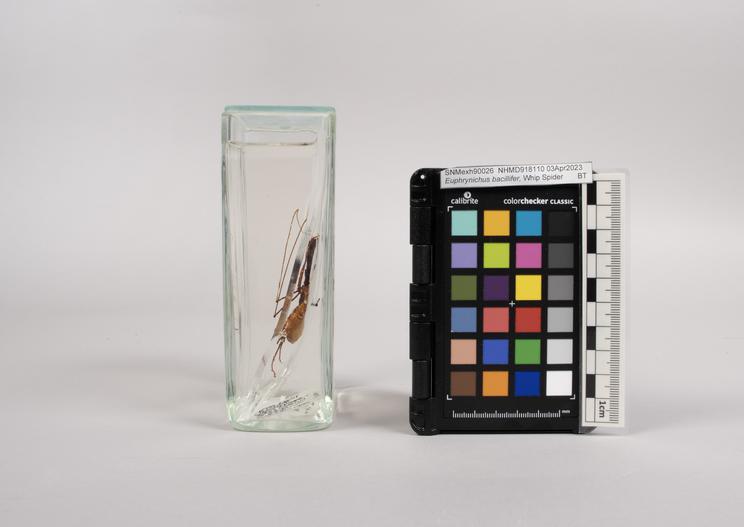
With no present damage to the specimens, and a relatively high ethanol content in the jars, even for the arachnids with the broken seal, the conservation treatment was rather straight forward.
First, the jars were cleaned of detritus and fatty fingerprints, and the clean-up included the removal of the old sealant around the lid and on the inside of the jars. The old sealant removed here was made from a base of spermaceti (the fatty wax found in the ‘melon’ of the sperm whale (Physeter macrocephalus) and is collected for our collections department to utilize.
The clean-up was, after removal of the specimens quite straightforward; water, soft abrasion, and soap followed by a thorough rinse to remove all the lipids.
Then the specimens were removed from the backplates, being extra careful, as the string fastening the specimen to the backplate were extremely taut after the warping of the Plastic.
Glass panes were measured and cut to create new inert backplates, and then drilled to fit the original mounting of the three specimens.
During this process, the specimens were kept in the fluid they had been stored in for so long, to prevent them from drying out while the glasswork was being done.
After remounting the specimens on their new backplates, an unstained solution of ethanol was poured into each empty jar, before the specimen was carefully placed back in.
Some fluid specimens, depending on type and use, are stored in 70% ethanol v/v, whereas others in our collections go as high as 96% alcohol. The specimens mentioned here are now stored in 70% ethanol v/v, except for the tarantula which is stored in a slightly higher concentration to match its previous storage fluid.
The lids and lips of the jars were ground with a fine grit, to properly bond with the seal, and these specimens were sealed with a silicone-product. The lids will be relatively easy to remove with a fine scalpel in the future.
Thus, the three specimens have been conserved, and are now ready to move into their new home! Safely kept in the conservations’ temporary storage until the galleries open.
